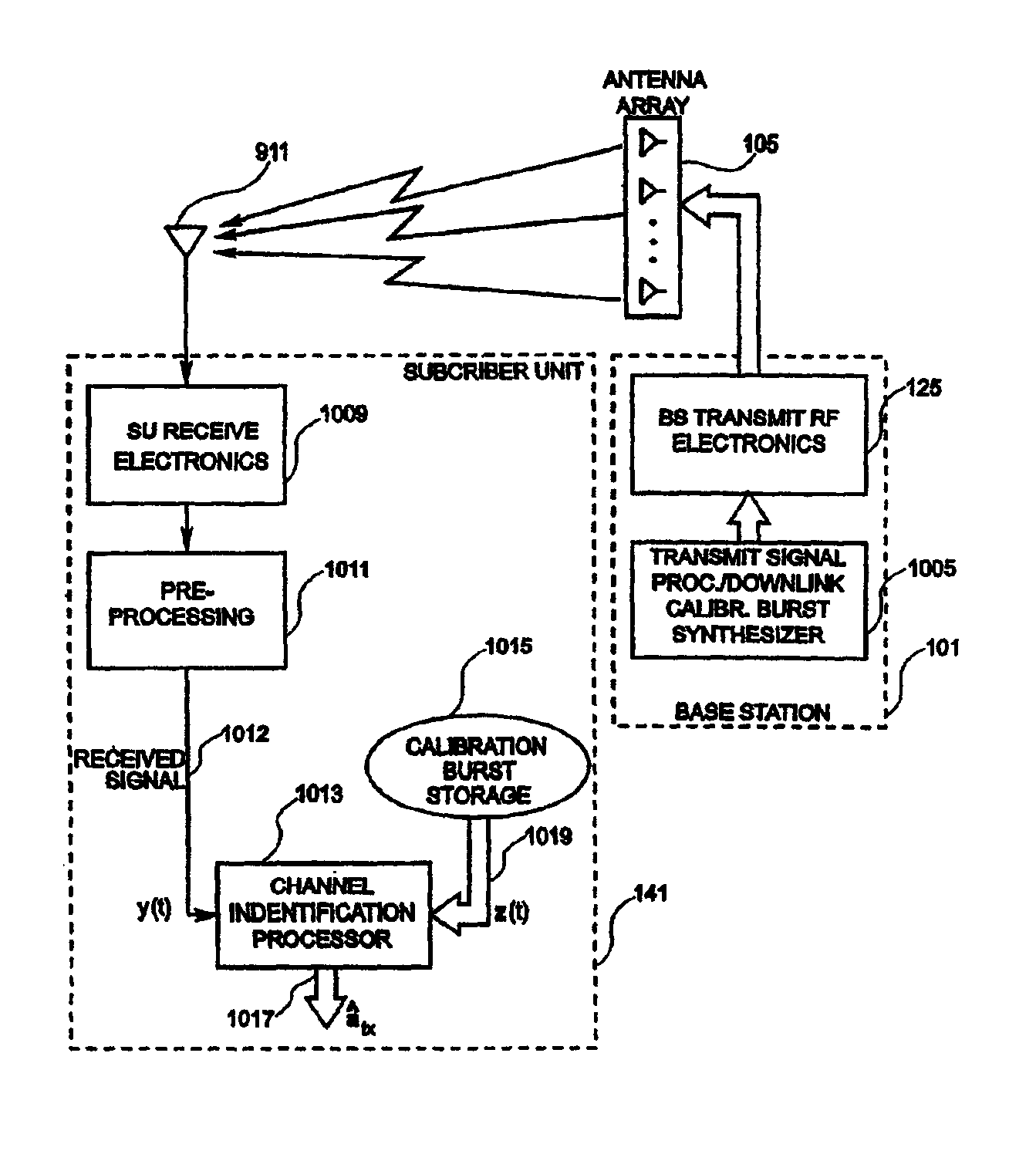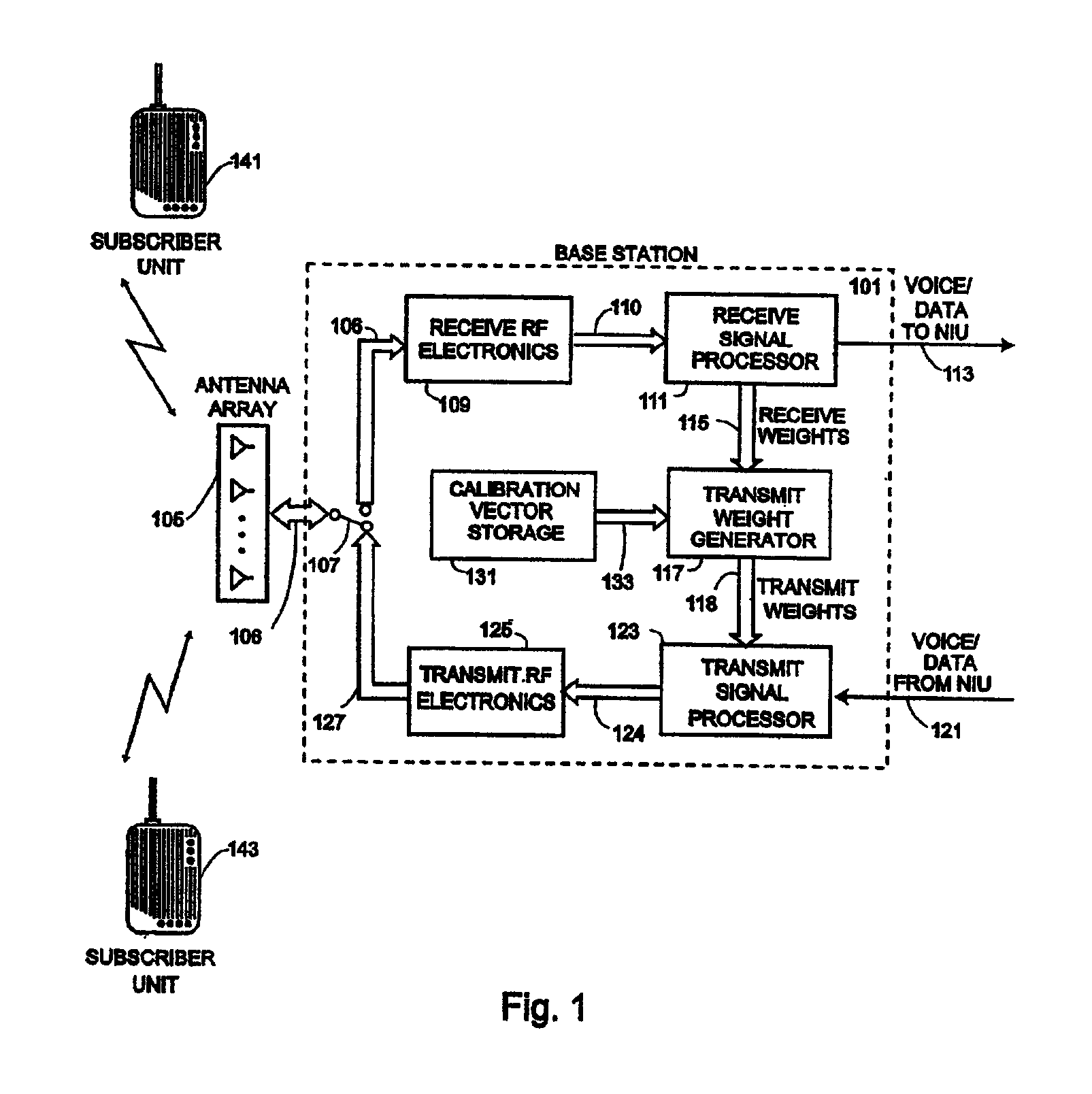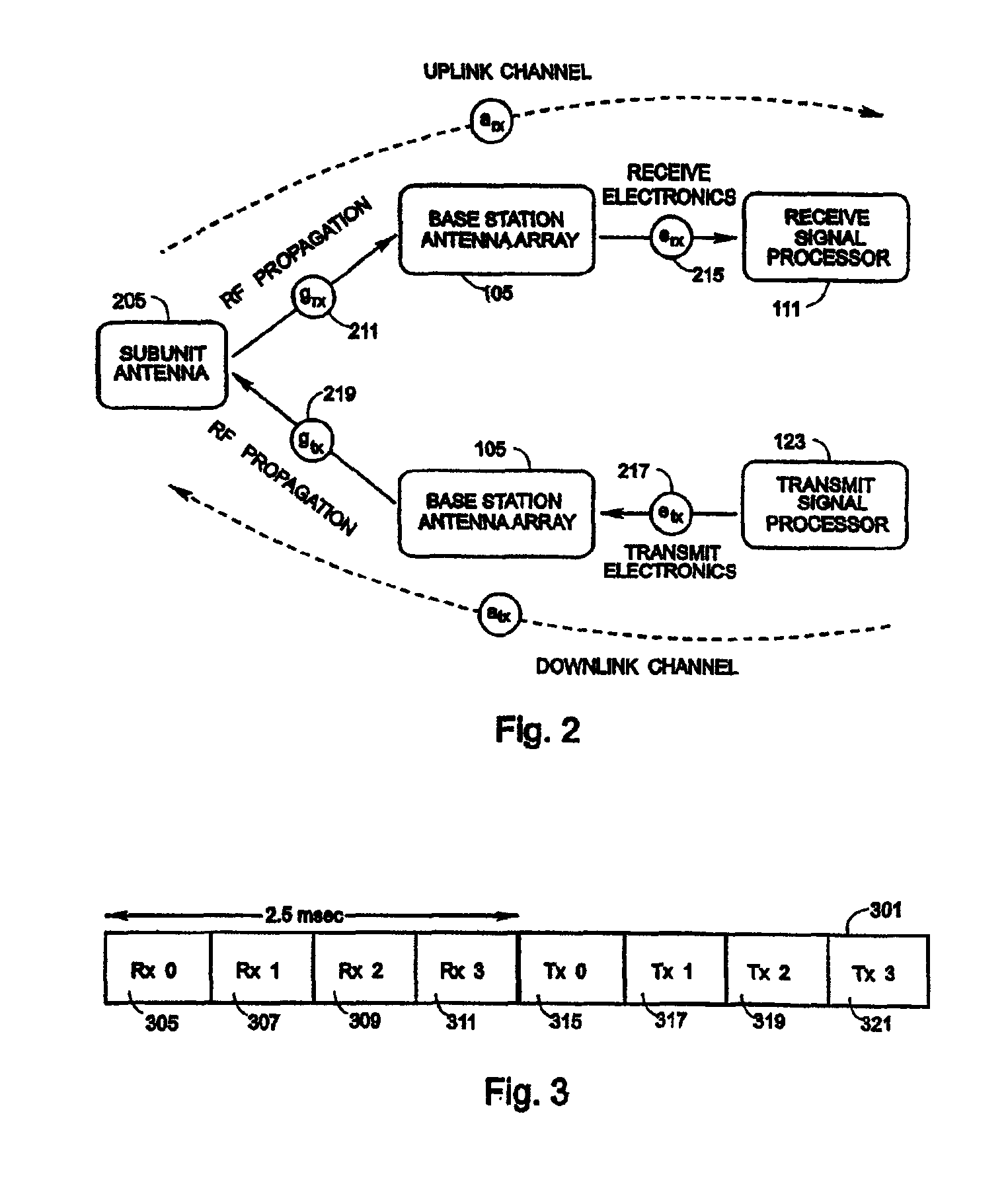Periodic calibration on a communications channel
a communication channel and frequency technology, applied in the field of periodic calibration of communication channels, can solve the problems of difficult to determine the transmit weight vector from the receive weight vector, less than optimal reception at the base station, and received signals that are being processed may be somewhat distorted, etc., to achieve rapid calibration, high accuracy, and easy implementation
- Summary
- Abstract
- Description
- Claims
- Application Information
AI Technical Summary
Benefits of technology
Problems solved by technology
Method used
Image
Examples
Embodiment Construction
A Note on Reference Numerals
[0070]The first one or two digits in a reference numeral indicate on which figure that reference numeral is first introduced. Reference numerals between 100 and 199 are first introduced in FIG. 1, those between 200 and 299 are first introduced in FIG. 2, and so forth. For example, reference numeral 111 is first introduced in FIG. 1, 909 is first introduced in FIG. 9, 1009 is first introduced in FIG. 10, and 1211 is first introduced in FIG. 12.
General System Description
[0071]The invention preferably is implemented in wireless cellular communication systems which include a base station (i.e., a transceiver, a communications station) with a multiple antenna array that uses smart antenna techniques for uplink or downlink communication or both. The preferred implementation is in a system that operates using the Personal Handyphone (PHS) air interface communication protocol. Two implementations are one in which the subscriber units are fixed in location, and th...
PUM
 Login to View More
Login to View More Abstract
Description
Claims
Application Information
 Login to View More
Login to View More - R&D
- Intellectual Property
- Life Sciences
- Materials
- Tech Scout
- Unparalleled Data Quality
- Higher Quality Content
- 60% Fewer Hallucinations
Browse by: Latest US Patents, China's latest patents, Technical Efficacy Thesaurus, Application Domain, Technology Topic, Popular Technical Reports.
© 2025 PatSnap. All rights reserved.Legal|Privacy policy|Modern Slavery Act Transparency Statement|Sitemap|About US| Contact US: help@patsnap.com



